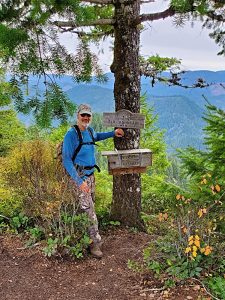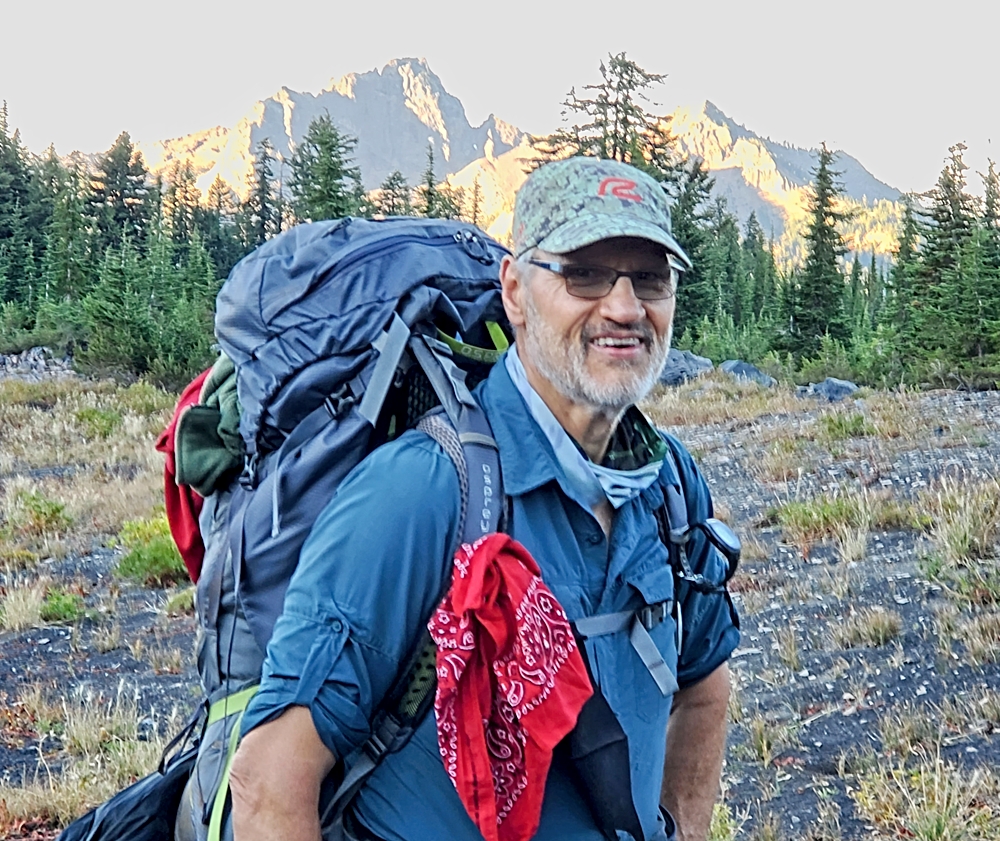By Don Backman
This is the first article in a series about hiking. Since it is the off season, and officially winter, it seemed best to start with the obvious question: Why would anyone in their right mind wander around in the hills in the cold wind and rain in Tillamook County? The beach is understandable, but the hills? Isn’t it nasty and wet? Don’t you get all muddy? It’s cold outside. Won’t you freeze to death?
Sorry, that bit is actually about November elk hunting. A friend once said to my brother while they were working on a steep hillside in cold sleeting January rain with a driving wind,“You know, if we were elk hunting we’d be having fun.” While it was a joke intended to make a miserable situation a little lighter, there is an element of truth. Mindset and perspective are important.
Advantages for off season and winter hiking on the coast and Coast Range:
There is one enormous advantage to hiking in the off season. No mosquitoes, No biting flies. No horseflies, gnats, and no-see-ums. Seriously. The low and no-bug factor can’t be underestimated. Anyone who has tried hiking in early summer knows what I mean. The higher Cascades are infamous during mosquito season. On a recent hike along the Wilson River trail something seemed different. Then it hit me. No bugs!
The trails can be in surprisingly good condition, too, so long as one sticks to areas that are drier. Common sense is needed here. If a spot is muddy in the summer it is likely to be very muddy in the winter, and if it is swampy then it will be really swampy if not under water. Just pick trails carefully and be prepared with shoes or boots with good traction so you can handle whatever comes along. If you are open to hiking on some of the many logging roads (please be sure to respect private property) your mud-less options increase significantly.
Some trails see much less activity in the winter than in the summer. This is especially true if one can juggle their schedule to hike on weekdays, but not everyone has that flexibility. However, the number of vehicles at a trail-head might not indicate how many hikers there are, as in a time of social distancing many people are driving individually to a trail-head where they meet up with their group. That leads to a lot more cars than in past years.

Downsides to winter hiking:
The main downside to off season hiking is the weather. A bad day for hiking is pretty obvious. Seventy mile an hour gusts and sideways rain with a flood watch is a pretty clear statement that it may be better to choose another option to hiking in heavy timber. You don’t want to be struck by a falling tree or limb, and in those conditions you’re going to get wet no matter what you do. A hike can always be rescheduled for a better day. It pays to watch the weather forecast and know what kind of weather to expect.
Other than that, any day when it isn’t rainy and miserable is a good day for hiking. Everyone has their own tolerance levels. Some people don’t mind hiking in rain, some like snow, while others prefer it to be dry at the minimum. I fall into the latter group and while I prepare for rain, I don’t generally head out unless the weather forecast promises a very low to no chance of it.
A final condition to be aware of is that the days are shorter. This can bite you if you aren’t careful. On a recent hike we suddenly found ourselves pushing to get back to the trailhead before dark. While we carry headlamps, winter nights can be very dark, particularly when the sky is cloudy. It is a good idea to watch the distance and time, and try to have an idea of how long it takes to cover a mile. Add some time as a cushion in case something slows you down. Turn around when you need to, even if you haven’t reached your goal.
Preparation for off season and winter-time hiking
A hike can be many things, so this section could be an article in itself. One would prepare quite differently for a hike at Kilchis Point Reserve or BayOcean spit than one would an all day wildcat hike up on Firebreak 8. When I was young (and dumb) I used to just head out in jeans and a coat. In my trail running days I literally ran with a water bottle and regular running clothes and was amused by those people who had a big pack for a little ol’ hike. However, as I’ve gotten older the wisdom in being prepared for trouble has sunken in. Now my choice is to carry a pack and be ready for an unexpected night out on the trail.
For longer hikes in the forest, a day-pack is very useful. While you will see people hiking without carrying anything (like I used to do), you’ll see more experienced folks with a pack of some sort. Make sure it can hold winter gear and the ten essentials. A day-pack allows you to carry clothing for layering, a headlamp, some food, and a means of shelter if you are injured and have to spend a night on the trail. On that note, it is a good idea to be sure to let someone know where you’ll be going and when to expect you back.
Trail navigation is essential once you venture off the well trodden trails. I personally use the Gaia app on my phone, and have downloaded copies of the Oregon Department of Forestry fire protection maps to refer to as needed. ODF also has a very good recreation map for sale.
Winter-time hiking can be fun and one doesn’t have to over-think it. It does pay to be prepared in case things go wrong, and that I’ll discuss further in a future article. The main thing is to get out there, know your limits, and enjoy yourself.
My plan is write articles about some local hiking options that are on and off the beaten path, as well as hikes in other areas of the state. The book 50 Hikes in the Tillamook State Forest is a good resource for relatively local hikes if you have a copy. Thus far this winter we have hit quite a few places, including Kings Mountain Junior and Kings Mountain, Elk Mountain, and we even tried to find an old burned out railroad logging camp from the Tillamook Burn. So, sit back and come along. Or better yet, meet me out on the trail.


